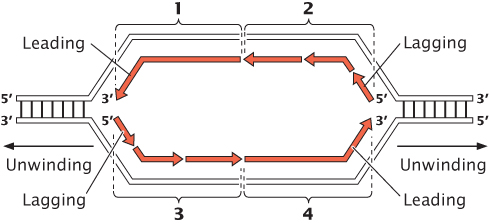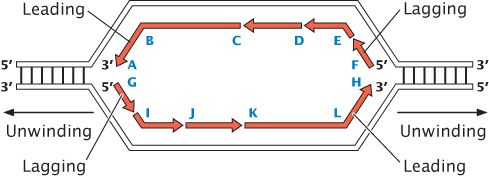Chapter 12 Branched Tutorial: Replication
Problem Statement
The following diagram represents the template strands of a replication bubble in a DNA molecule. You will need to correctly provide the locations and directions of components relating to the new strands which will be produced.
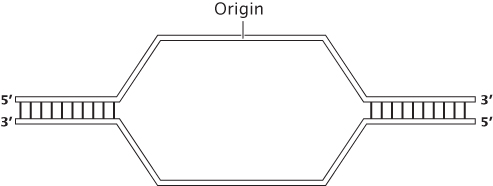
Question
From the choices below, select the diagram which shows the correct labeling for each of the following features: the direction of unwinding; 5′ and 3′ ends of the new strands; leading strands; lagging strands; Okazaki fragments; and RNA primers. (Note: the newly synthesized strands are shown in red.)
A.
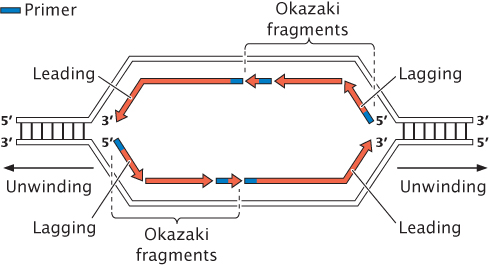
B.
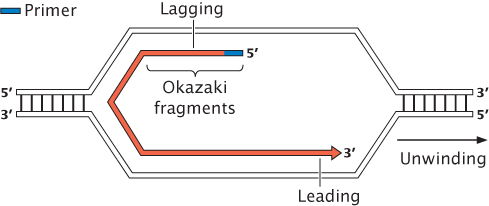
C.
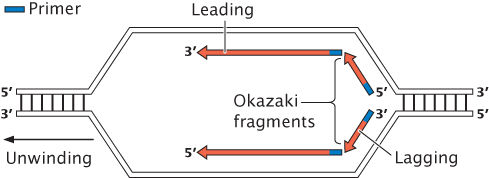
D.
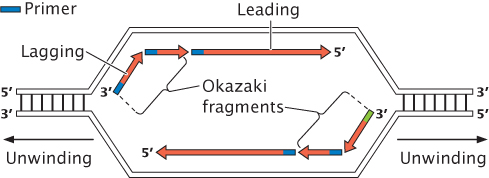
E.
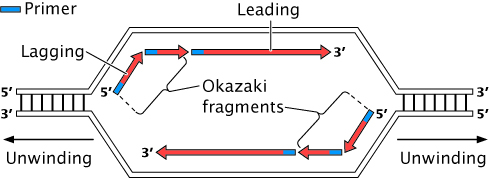
F.
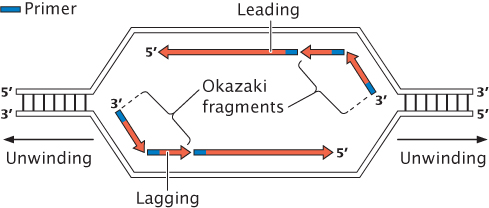
G.
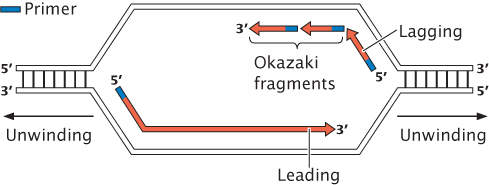
H.
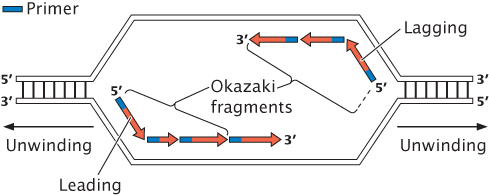
I.
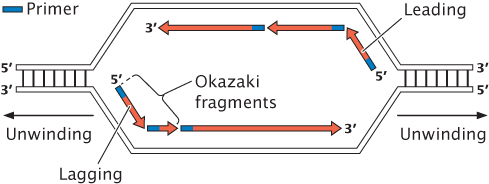
| A. |
| B. |
| C. |
| D. |
| E. |
| F. |
| G. |
| H. |
| I. |
Step 1: Understanding the problem
Question
1. What general topic in genetics does this question address?
| A. |
| B. |
| C. |
| D. |
Instant TA
There are some key words in the Problem Statement that should help you determine the topic. Which process involves making a new copy of the DNA molecule?
Step 2: Identifying the proper 5′ and 3′ directions
Question
1. Which of the following diagrams displays the proper labeling of the 5′ and 3′ directions for each newly synthesized strand of DNA?
A.

B.

C.

D.

| A. |
| B. |
| C. |
| D. |
Instant TA
The strands of a DNA molecule have polarity or directionality—if one end of the strand is 5′, then the other end of the strand must be 3′. The strands will be antiparallel, or in opposite directions to each other.
Step 3: Determining the direction of replication
Question
1. Which of the following diagrams displays the proper labeling of the 5′ and 3′ directions for each newly synthesized strand of DNA?
A.

B.

C.

D.

| A. |
| B. |
| C. |
| D. |
Instant TA
New nucleotides are always added to the free 3′ hydroxyl group of a DNA molecule.
Step 4: Unwinding of the DNA
Question
1. Select the diagram below that has the correct direction of the unwinding of the DNA as well as the leading and lagging strands labeled properly.
A.
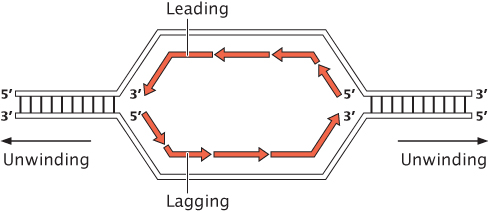
B.
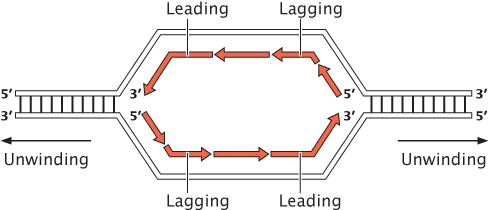
C.
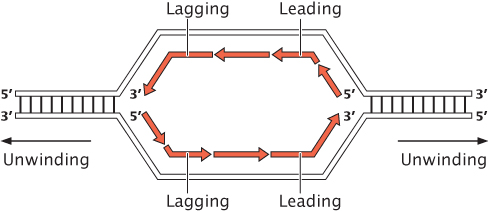
D.
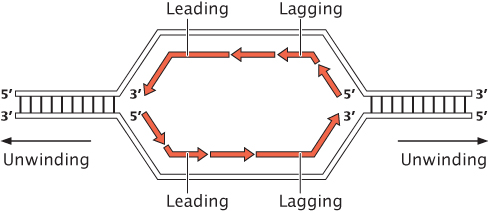
| A. |
| B. |
| C. |
| D. |
Instant TA
Since new nucleotides are added at the 3′ end of a new DNA molecule, the template strand must unwind to allow for continued addition of nucleotides to the 3′ end. Continuous replication can only occur with leading strand synthesis.
Step 5: Locating the Okazaki fragments and RNA primers
Question 1
1. Choose the diagram that is properly labeled.
A.
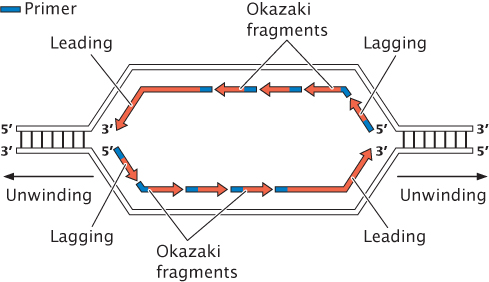
B.
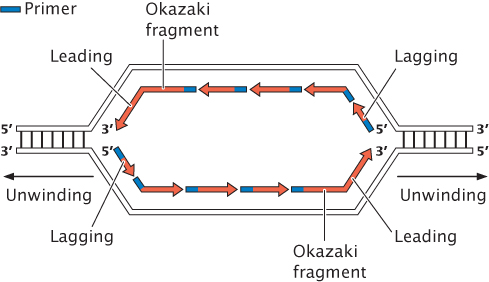
C.
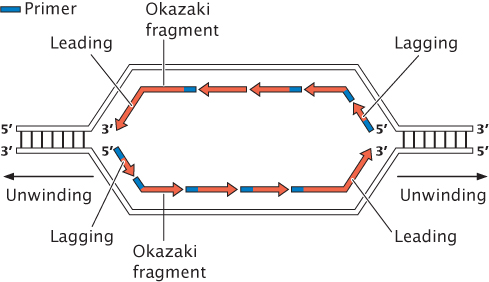
D.
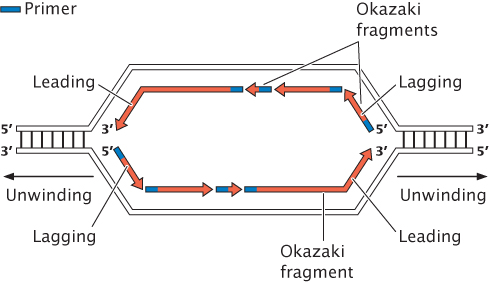
| A. |
| B. |
| C. |
| D. |
Instant TA
Okazaki fragments are short stretches of DNA that are created during discontinuous replication on the lagging strand. An RNA primer is required to initiate DNA synthesis. On the lagging strand, there will be one RNA primer at the beginning (5′ end) of each Okazaki fragment. There will be a single primer at the beginning (5′ end) of the leading strand.
Step 6: Solving the Problem
Question
Now that you have reviewed some details, let’s try the initial problem again. From the choices below, select the diagram which shows the correct labeling for each of the following features: the direction of unwinding; 5′ and 3′ ends of the new strands; leading strands; lagging strands; Okazaki fragments; and RNA primers. (Note: the newly synthesized strands are shown in red.)
A.

B.

C.

D.

E.

F.

G.

H.

I.

| A. |
| B. |
| C. |
| D. |
| E. |
| F. |
| G. |
| H. |
| I. |
Instant TA
If you are unsure of the answer, go back and review some of the earlier steps that you worked through for this problem.




